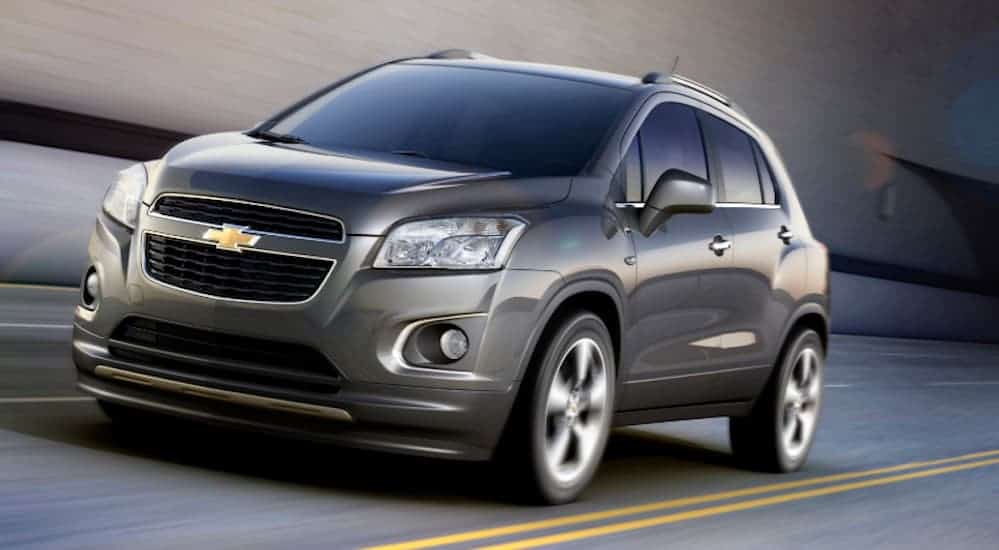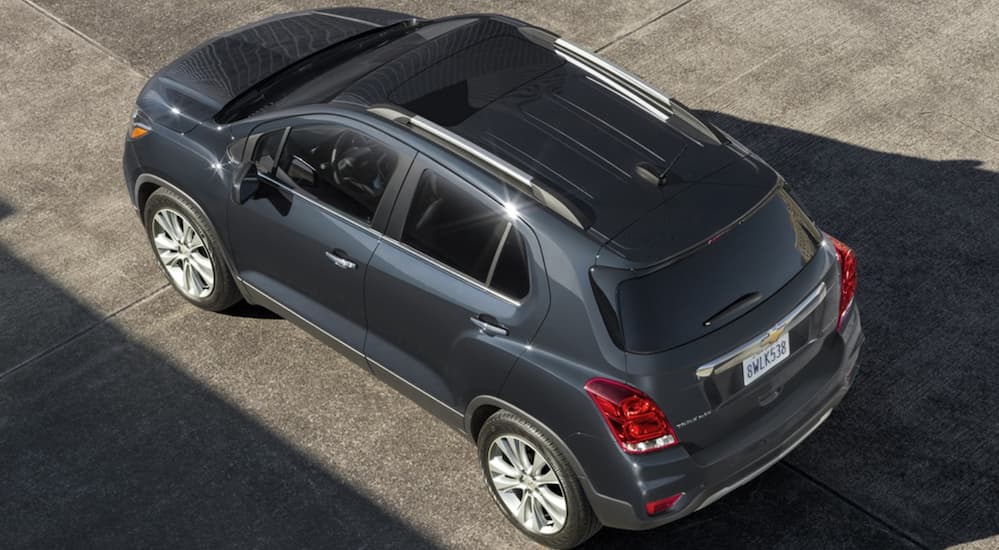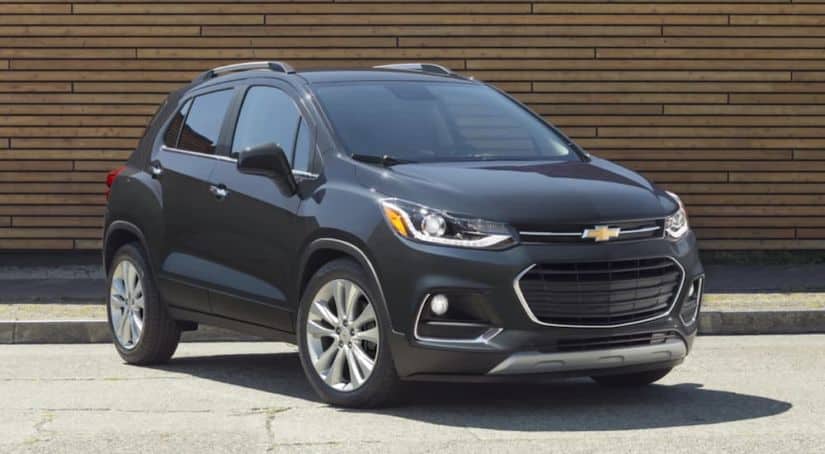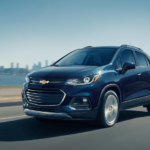The 2020 Chevy Trax is a great example of a car that fits a particular niche and serves those well who know what they want it for. Its current iteration has all of the features that anyone could ask for, and it performs very well in the city. It often gets panned by reviewers comparing it to other SUVs but has great overall customer satisfaction, so it is tough to put this model down. Before looking at the 2020 Trax, it always helps to have an idea of the development of the car to get a sense of what’s known to work well with it- and what hasn’t. Chevy has definitely learned from its critics, and the 2020 model is better than ever, with features to please all.
2013
When the Trax was released in 2013, one of the most notable things about it was how short it was- 1 inch less than a VW Beetle. For an SUV, that seems like an odd choice to make, but if you like an SUV more for the space and safety it gives your family (over a sedan) along with the driving experience of being higher up and the larger vehicle, it makes sense. And then, that ability to maneuver through city traffic (as opposed to offroading with a hatch full of camping equipment) and park more easily and in more places becomes more of an asset than a liability. Therein lies the appeal and general philosophy of the light SUV. Chevy was so committed to this idea that they built the Trax on their Gamma II platform designed for small cars like the Chevy Spark.

As a city SUV, a lot of the distinguishing features came from interior specs and providing a great riding experience. As such, while front-to-back car length is kept as narrow as possible, leg and headroom are given more than ample space, along with several different seating configurations to help keep everyone happy. Overflowing with cup holders and other storage compartments (19 of them), it was the kind of vehicle designed to keep everyone in a small family comfortable and out of each other’s hair. The Buick Encore, a luxury version of the same vehicle, specializing in noise isolation, was stated by Buick to be aimed at young professionals looking to get around the city comfortably, look good showing up to work, and get the kids to soccer practice doing the same thing. However, it was also aimed at empty nesters who wanted a safer, more comfortable way to get around town. The Trax was aimed to do the same thing, just without paying so much for a sound-engineered driving experience.
The base model curiously enough lacked air conditioning and automatic transmission, which put the base model price at $18,500, but that quickly jumped a couple thousand when getting those expected features on the next higher level trim that came with Bluetooth connectivity, a 110V AC 3-prong electrical outlet, cruise control, and steering-mounted controls. One level higher brought the backup camera, ultrasonic rear parking assist, and remote starting as leading conveniences. However, notable drawbacks were drum brakes (it had disc brakes upfront for more intense braking needs, but its main competitor, the Tucson, had complete disc brakes), a small rear window with back pillars that blocked the view, a lack of knobs in the infotainment system to allow you to make adjustments there without taking your eyes off the road.
The fuel economy was basically the same as bigger SUVs, with 25 MPG combined in Consumer Reports’ testing, 30 MPG in the city, and 41 MPG on the highway for two-wheel-drive, changing to 27 MPG and 36 MPG for all-wheel drive in AutoGuide’s report. If you lived in the UK and wanted to give up on noise and get a diesel engine, you could get a staggering 57 MPG for two-wheel drive and 62 MPG for all-wheel drive. But part of the fuel efficiency discrepancies had to do with driving habits and its EcoBoost turbocharged technology, which improves fuel efficiency the more you drive like your driving instructor is sitting next to you, but loses fuel efficiency quickly the more you accelerate quickly, but also cruising at high speeds or carrying heavy loads could quickly turn the turbochargers into significantly inefficient modifications. Either way, its engine wasn’t as powerful as big SUVs, and with the cost it took to add all-wheel drive and all the other little improvements a lot of people expected, its price category wasn’t going to attract anyone away from competition, and it would turn more than a few away.
2020
Now in 2019, the 2020 model maintains its appeal as a crossover that feels like a big car while retaining a lot of its small car appeal. With a sticker advertising 28 combined MPG (26 city, 31 highway), when it comes to fuel efficiency, this model has not changed much over the years.

One safety concern with SUVs is their rollover rating, on which the Trax gets four stars, with fives on every other metric.
Its interior is more comfortable than ever as GM continues to please with its infotainment systems offering Apple CarPlay and Android Auto, Bluetooth, and USB connectivity. The Trax even offers WiFi hotspot capabilities on higher trims, and Chevy has led the way in tech support in their models since OnStar started. Back-up cameras, turn by turn navigation, automatic crash response, and ten airbags come standard, along with voice recognition, a touchscreen infotainment system, as well as a hands-free phone and smartphone interface. Rear parking sensors, blind-spot monitoring, and rear cross-traffic alerts are options, but you have to get to the highest trim level to get all the driving aids.
One of the selling points is that while it remains a small SUV from bumper to bumper, the interior is spacious compared to other crossovers of its class. Kelly Blue Book customer ratings give it 4.4 stars, so the people who got it like it pretty well, depending, of course, on what purpose they got it for. However, it still has drum brakes in the rear, which for an SUV that you’re not loading down heavily or needing to slow down quickly isn’t going to trouble you. More importantly, with the base level offering an automatic transmission and air conditioning, unlike the original release, along with 2020’s pricing scheme, all versions of the Trax are much more competitive at appealing to your wallet than when it was first figuring itself out, despite starting at $22,295 MSRP.
The Trax has ironed out a few of its rougher spots as it’s been developed, but its original weaknesses have been worked out. It rides comfortably, has a commanding seating position with great outward visibility, and can shuttle four people around in an environment that gives everyone the amenities to enjoy each other’s company without getting in each other’s hair. Is the Trax right for you? It depends, if you’re looking for a bigger, cooler, safer, more comfortable car for the city, then odds are you’ll probably like the Trax. If you want an SUV with power and versatility, keep looking for the next one.



